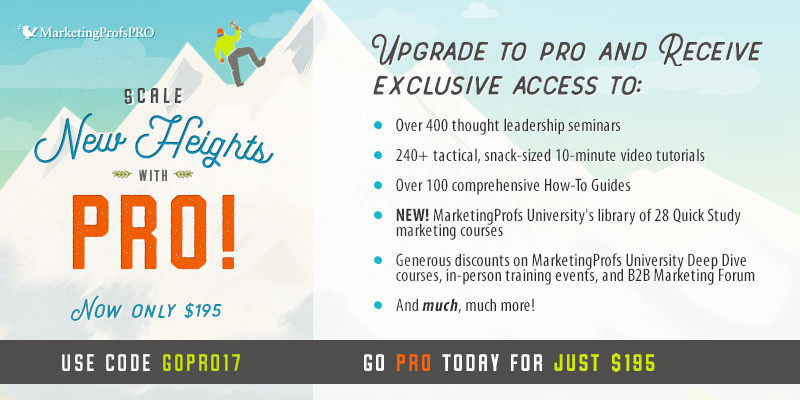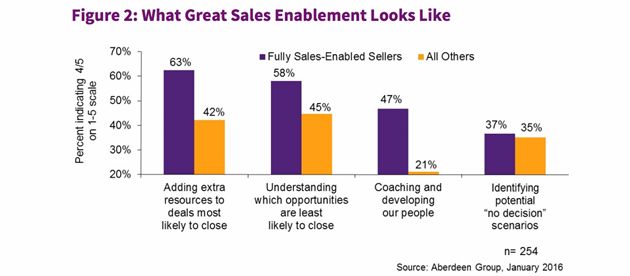Content marketing. Social selling is the process of developing relationships, via social media, as part of the sales process. There's no easy answer, but a useful answer is, Equip the salesperson with content that will help close deals. Marketers and salespeople must dig into this process together and get specific: What questions need to be answered at each stage, and how should the answers be presented so the content will be useful for the sales process? Enable content personalization Your salespeople will often want to personalize specific pieces of content for each prospect. Content... sales person... customer... social selling... sales enablement... Why not create a modular FAQ that a salesperson can easily customize? Much like the approach to the FAQ, here again you can make this tactic more effective by making it modular and customizable. Here, again, consider how the product comparison can be easily customized to make it the timely and specific tool the salesperson needs. Personalized social media updates: Social selling, obviously, involves the frequent use of social media.


Push marketing. Pull marketing. Content marketing. Social selling. Sales enablement.
This article should begin with a brief glossary…
Push marketing is a traditional marketing approach. A brand aims to promote to large groups via media channels—i.e., advertising. In the digital age, this form of marketing has gotten a bad rep—and, often, achieved diminishing results.
Pull marketing is the sweetheart of new media. It’s supposed to “pull” customers to the brand through search, social, and other non-intrusive methods. Ideally, the customer wants to consume the marketing content the brand publishes.
Content marketing, simply put, is the publishing of relevant content that attracts and retains customers.
Social selling is the process of developing relationships, via social media, as part of the sales process.
Sales enablement is marketers’ supporting salespeople with the content, training, and analytics Sales needs to build relationships and win business.
Are we good?
I’m not encouraging you to take a stance on any of this stuff yet. Just know this: All the above are in the playbook that people in marketing and sales use to work together to grow their business via digital channels. That joint effort is part of “Sales and Marketing alignment.” (Our glossary expands.)
But didn’t the new world order make push marketing old?
Maybe it did. Craig Davis, Chief Creative Officer of J. Walter Thompson, famously said, “We need to stop interrupting what people are interested in and be what people are interested in.” (Fun flashback here, foreshadowing the content marketing revolution.)
If there was ever a content marketing lightning bolt, that’s it right there. Let’s break it down…
Interruption = bad. Who wants to be interrupted? No one.
So, as consumers, we filter out advertising wherever we can, however we can. As marketers, we adopt a publishing model, and in this new paradigm we focus on publishing informative content. Make a commitment to that strategy, and it works.
But, getting back to Craig’s statement: When we are what people are interested in, essentially we are a trusted source of information that helps them make useful decisions.
A focus on sales enablement delivers serious results
To get to where I’m going, I need to move on to the clunky but important idea of “sales enablement.” No need to overthink it. Let’s just say the scope of a successful content marketer isn’t only to get leads; it’s to also use his or her talent, resources, and magical powers to convert leads to sales.
How’s that done? There’s no easy answer, but a useful answer is, Equip the salesperson with content that will help close deals. In other words, become a supplier in the social selling process.
“The glue between Sales and Marketing, sales enablement helps measure the effectiveness of content assets, messaging, and collateral that are sent to buyers,” writes social selling expert Jamie Shanks of SalesforLife. “There is a significant uplift with organizations that have solidified this alignment.”
In a post on his blog, Jamie examines how best-in-class sales enablement teams operate, and cites Aberdeen Group research that found companies with a sales enablement content strategy in place excelled at creating a reliable pipeline with higher revenues.
The research found that best-in-class sales-enabled companies outperformed the competition, on average generating twice as much total company revenue and twice the average deal size; sales-enabled sellers massively outperformed their competitors in lead conversion as well.

The process begins with a strategy that maps buyers to the purchasing cycle (or sales funnel). The big idea: create content that the salesperson can use with maximum impact—content based on the potential buyer’s specific needs at a given moment.
If you have created buyer personas that detail the essential demographics and psychographics, including the pain points, of your customers, you then proceed to break down their information needs at various stages. Commonly, this is done by using a model that separates the process into the top, middle, and bottom of the sales funnel.
Top of the funnel (TOFU)
The focus at the top of the funnel is to achieve awareness and begin to build a relationship with someone new to the company. Reasonable objectives at this stage include inspiring some form of social media engagement and persuading the person to subscribe to your email list.
In most cases, your content should focus on helping readers address a specific challenge they grapple with in life or work. Common content types at the TOFU stage include blog posts, infographics, and social media.
Middle of the funnel (MOFU)
Here, your prospects have demonstrated interest. They could be considering purchasing your solution, and so your content should assist them with the process. The content types mentioned at the TOFU stage are still fair game; however, in the MOFU stage, you’ll aim to deliver more targeted content, preferably in a more personalized way, such as email.
The implication for social selling is that the marketing department supplies the salesperson specific content in accordance with the prospect’s needs. The objective, as you might imagine, is to move the…
COMMENTS